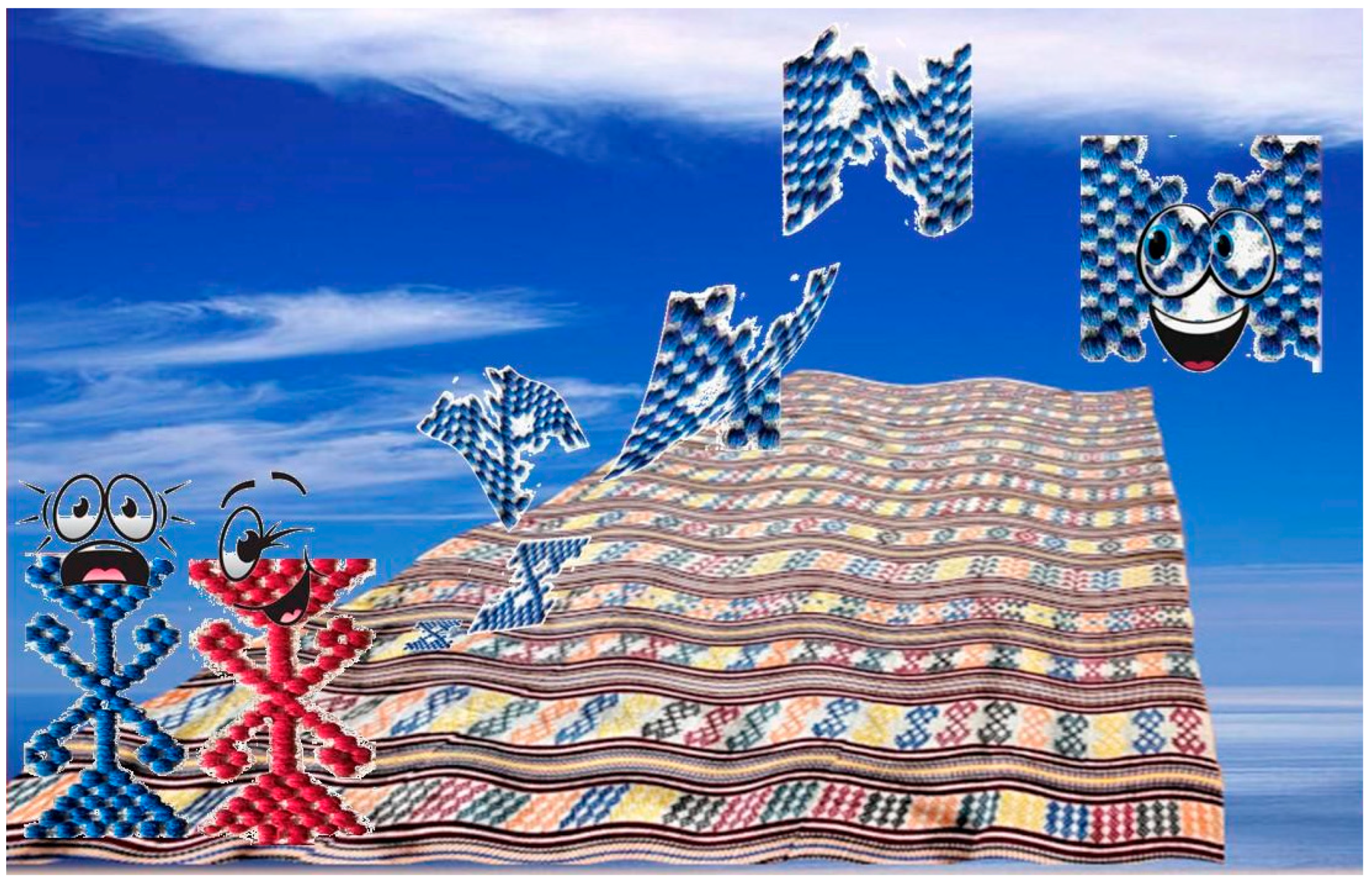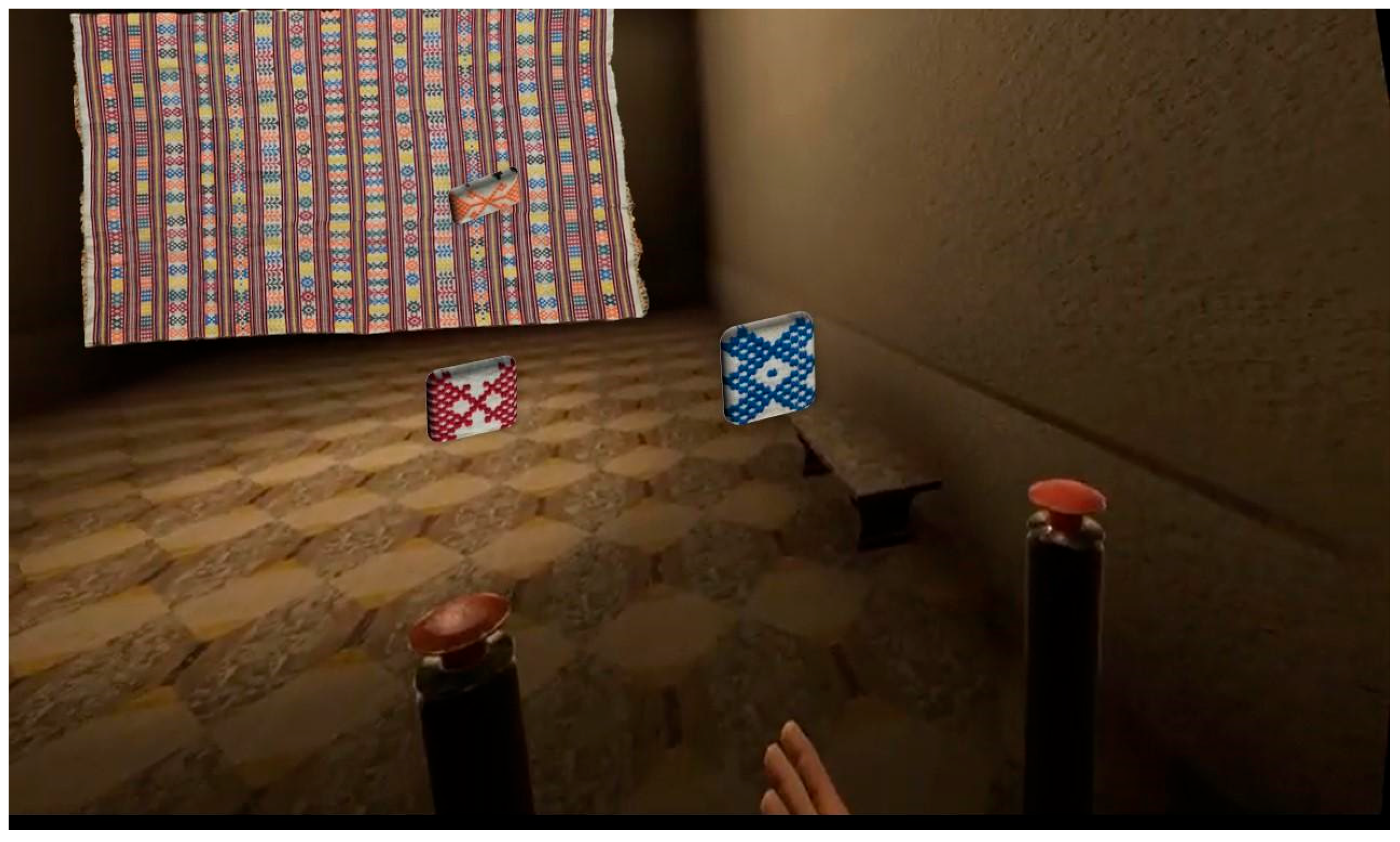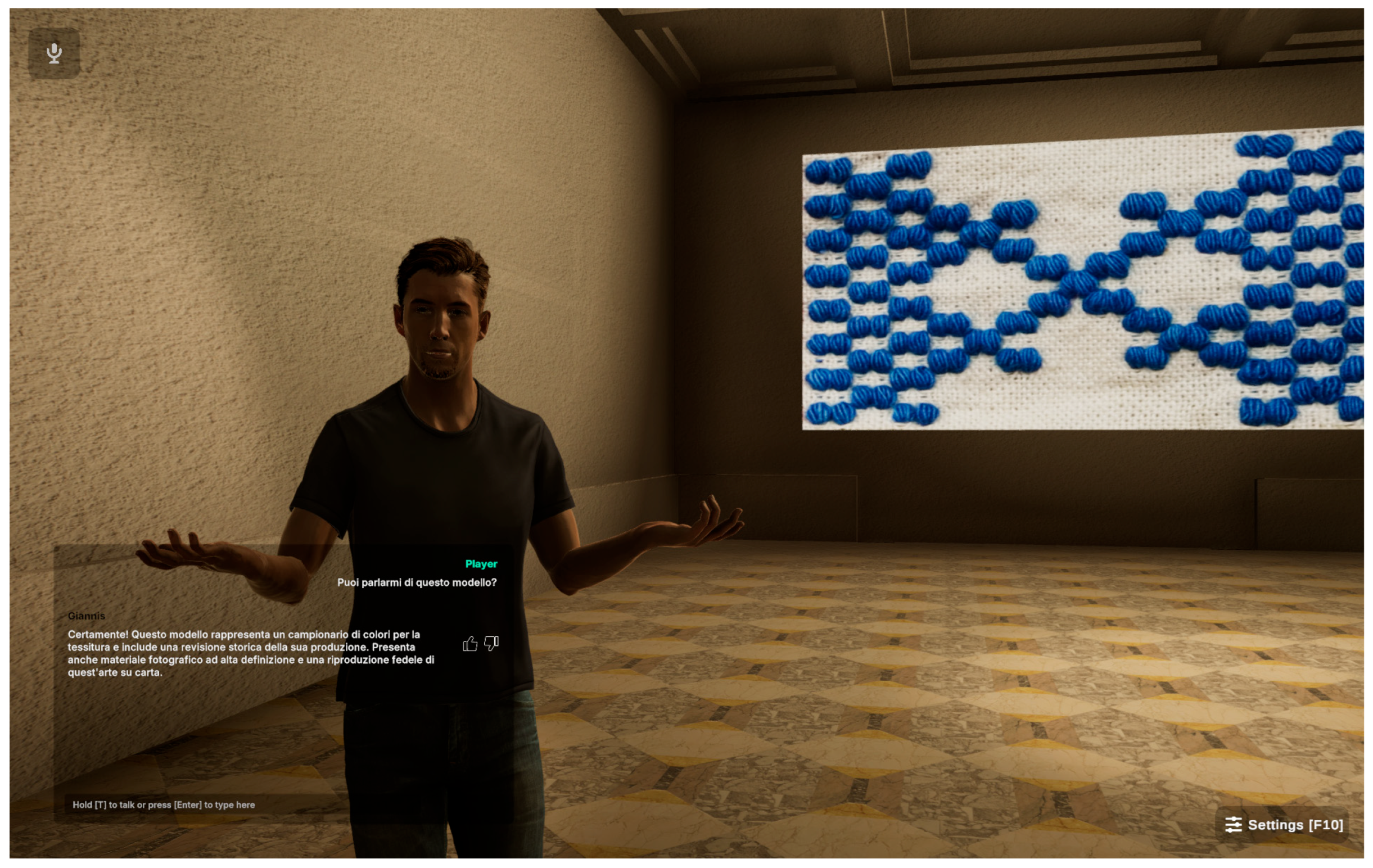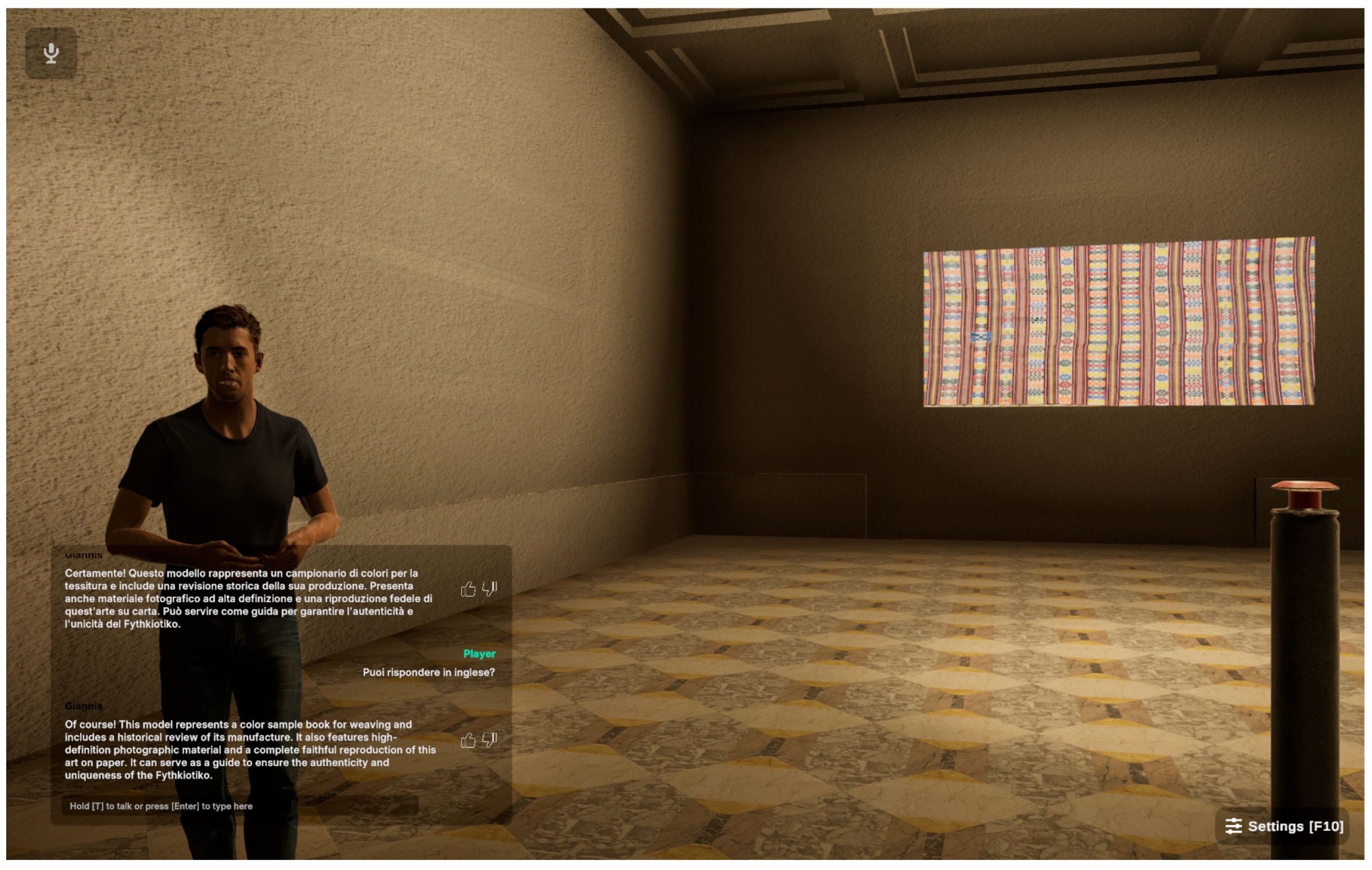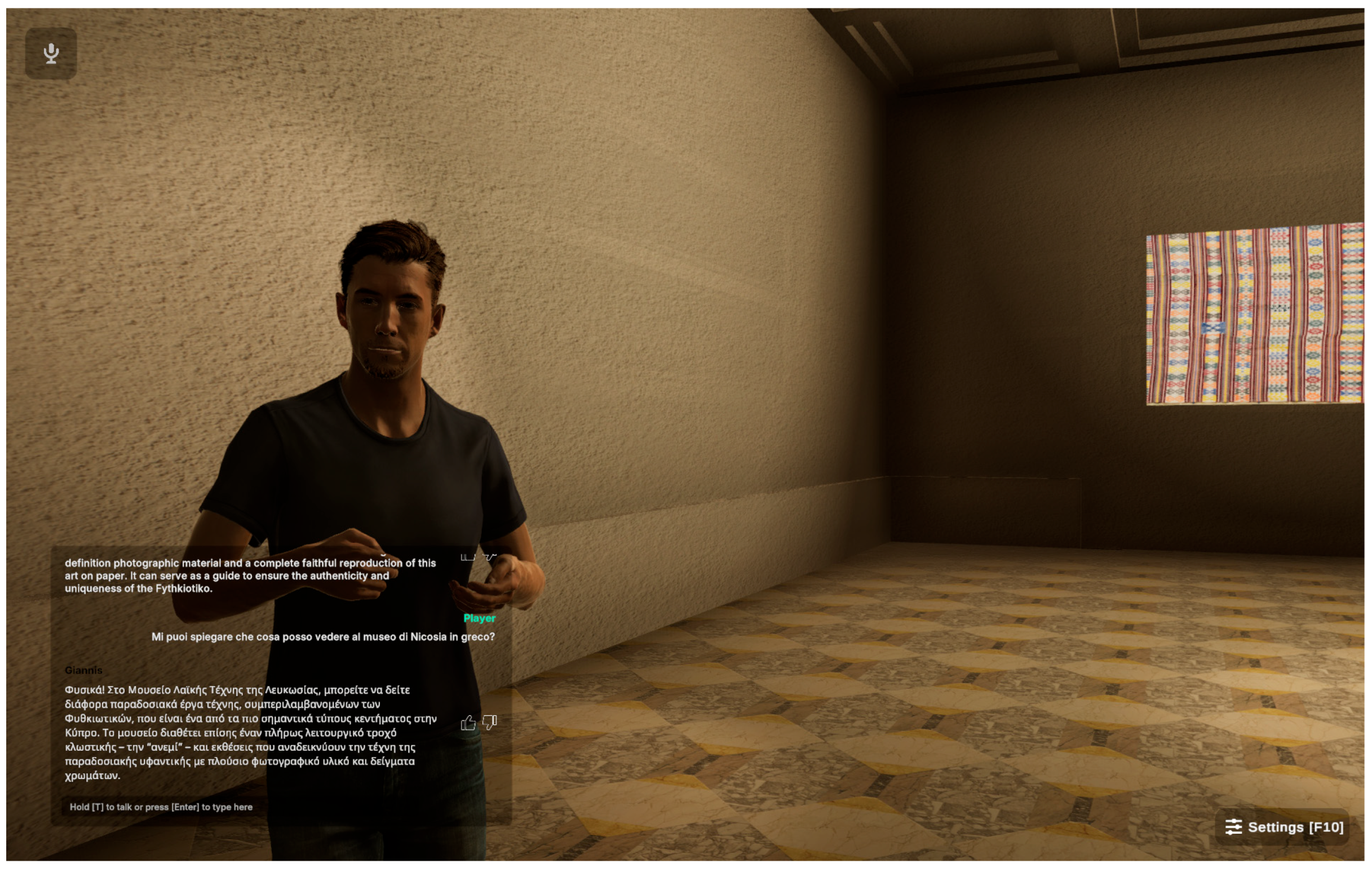1. Introduction
Folk culture consists of essential elements that influence the structure of our society, with various traditional aspects continuing to persist and affect how people view the world today [
1]. Folk culture serves as a dynamic testament to the evolving cultural identity of each community, shaped by historical, environmental, and social influences over time. Traditions, while transmitted across generations, are not static; rather, they are continually reinterpreted to reflect the specific needs and circumstances of each era. The capacity of folk culture to adapt ensures its relevance across varying temporal and cultural contexts. For any traditional form of expression to maintain its significance and resonance within contemporary society, it must undergo a transformation that aligns with shifting cultural narratives and societal expectations. Such evolution is crucial to its survival; without it, traditional expressions risk becoming obsolete, disconnected from the values and lived experiences of modern audiences [
2].
The intersection of tradition, transition, and transformation plays a pivotal role in contemporary educational practices [
3,
4,
5], particularly in the context of folk art and museums. In order to deepen students’ understanding of the diversity, cultural significance, historical evolution, and social functions of folk art forms, educators seek to foster an authentic engagement with and appreciation for these artistic traditions. Within the framework of critical museology, museums are increasingly re-evaluating their social function, positioning themselves as spaces for knowledge exchange and active participation in forging connections between tradition and contemporary experience [
6]. This shift reflects a broader transition in the museum’s role—from a repository of static heritage to a dynamic forum for cultural dialog. As a result, museum education is in constant need of a significant transformation, emerging as an autonomous and reflective practice that challenges, expands, and redefines both exhibitions and institutional structures to promote meaningful learning experiences for a diverse audience of visitors [
7]. This paper aims to explore the development of virtual museum environments for the Nicosia Folk Art Museum through the use of virtual reality (VR) technologies. It discusses how these educational initiatives can enhance engagement with cultural heritage by making folk art more accessible, interactive, and meaningful for contemporary audiences. Framed within the context of museology, this paper investigates how VR can support the museum’s evolving role as a dynamic space for cultural dialog, education, and personalized visitor experiences—bridging the intersection of tradition, transition, and transformation in museum education.
2. The Example of an Educational Project Developed with Non-Digital Technologies
Before delving into the technological dimensions of these educational initiatives, it is essential to describe the background and the context that inspired the design of the software. Museums are vital spaces for engagement, promoting accessibility, inclusivity, and transformation [
8,
9]. A key example is the collaboration between the UNESCO Chair and the University of Nicosia’s Department of Education at the Nicosia Folk Art Museum. Established in 1937 in the Old Archbishop’s Palace, the Nicosia Folk Art Museum (
https://www.nicosia.org.cy/en-GB/discover/museums/cyprus-folk-art-Museum/ accessed on 22 June 2025) preserves Cypriot folk art, reflecting the island’s cultural identity through diverse forms of folk art, such as weaving, pottery, woodcarving, metalwork, basketry, leatherwork embroidery, lace, etc. The objective of the educational initiative, which has already been carried out, at the Nicosia Folk Art Museum was to engage preschool children through hands-on experiences led by student-teachers. An event at the Nicosia Folk Art Museum commenced with a short theatrical performance devised and enacted by the student-teachers, based on a reimagined Cypriot folk myth titled The Naughty Gnome of the Well. This adaptation playfully transformed the traditional tale of haunting gnomes into a child-friendly narrative in which the mischievous gnome, after stealing pretzels from a baker, falls into a well. Despite the gnome’s antics, the fictional community expressed a sense of loss in its absence, prompting the community leader—within the narrative—to challenge the characters and children to complete four tasks in order to bring the gnome back. This storytelling performance provided a narrative framework for guiding the children through four interactive activity stations, each designed around the pedagogical concept of patterns (visual, auditory, and kinesthetic). Each activity was intentionally designed to foster experiential learning and promote core developmental competencies. Throughout these engagements, the children collected handkerchiefs representing abstract values—knowledge, cooperation, humor, and patience—associated with each activity. At the conclusion of the event, these symbolic artifacts were joined together during a celebratory group dance marking the return of the gnome, thereby reinforcing the event’s overarching themes. Guided by new museology principles, which emphasize context and social relevance, the project encouraged an appreciation of folk art while transforming the museum into an active learning space.
2.1. Educational Project Outcomes and Benefits
Artistic creation entails addressing both technical and conceptual challenges, positioning the creative process itself as a form of problem solving. Technical challenges involve mastering the use of materials and media—such as techniques for painting or constructing—while conceptual challenges relate to the development and communication of underlying meanings and ideas, such as determining what subject matter to represent. The artist navigates choices concerning media, design principles, the thematic content, and stylistic approaches, all within a framework guided by a central conceptual focus. Rather than constraining the process, practical and conceptual boundaries serve to sharpen the intent and enrich the creative outcome, supporting a focused and purposeful artistic endeavor [
10]. Conceptual problem solving in art extends beyond the initial articulation of a big idea, requiring an ongoing inquiry into its multiple dimensions. This may involve strategies such as omitting information, subverting conventional perspectives, or juxtaposing disparate elements—objects, figures, or contexts—in novel ways. Transformation emerges as a central strategy, wherein artists deliberately alter standard representations using visual means to convey deeper or unexpected meanings. In resolving such conceptual issues, artists engage in cognitive practices such as risk-taking, imaginative play, exploration, and the use of humor. These strategies enable them to push beyond traditional limits, generating innovation and enhancing the expressive power of their work [
11].
Similarly, educators encounter complex challenges in the instructional design process, particularly after a central theme or big idea has been established. Decisions must be made regarding pedagogical methods, activity structures, and the selection of media and materials in a manner that aligns with the learning objectives, the educational environment, and the developmental needs of young learners. Humor is identified as a valuable tool in facilitating the transformation of educational practices. However, it must be employed with care; while humor can provoke laughter, the two are not synonymous, and not all forms of humor are suitable for educational settings. Humor that is manipulative, demeaning, or discriminatory is inappropriate, especially in early childhood contexts. For young children, laughter is frequently elicited by the unexpected or incongruous—elements that challenge established norms and expectations, offering playful yet meaningful opportunities for engagement and reflection [
12].
Humor emerged as a significant pedagogical element contributing to the success of the event at the Cyprus Folk Art Museum, offering notable benefits for both the student-teachers and the participating children. More broadly, humor facilitates positive interpersonal interactions and strengthens social bonds. In educational contexts, the strategic use of humor has been shown to enhance the overall classroom climate, promote effective communication between educators and learners, and serve as an informal classroom management technique that supports constructive teacher–student relationships. When appropriately aligned with the instructional content, humor can diminish critical judgment, reduce stress, and sustain student attention and engagement by fostering a more enjoyable learning experience. Additionally, humor has been linked to the development of critical thinking, creativity, imagination, and a sense of community among learners. Importantly, educators are not required to possess professional comedic skills to effectively integrate humor into their teaching practice. Simple yet intentional strategies—such as opening lessons with light-hearted jokes, embedding humorous prompts in assessments, or contextualizing content through playful scenarios like The Naughty Gnome of the Well—can stimulate student interest. Furthermore, incorporating unconventional methods, such as using song lyrics to illustrate mathematical concepts or introducing unexpected, respectful surprises, can serve to captivate attention and enhance the learning experience in meaningful ways.
A central component of the educational event at the Cyprus Folk Art Museum was the strategic incorporation of storytelling. Employed as a pedagogical framework, storytelling effectively structured the sequence of activities and guided children toward meaningful and purposeful engagement. When integrated with contemporary digital technologies, storytelling holds considerable potential to stimulate children’s imagination and deepen their engagement with the cultural content. For instance, traditional motifs—such as patterns from a woven bedcover—can be digitally animated and transformed into imaginative, unexpected forms, thus enriching the interpretive possibilities of heritage artifacts (see
Figure 1).
2.2. Expanding the Educational Project Through an AI-Based Tutor to Make Folk Art Relevant and Increase Accessibility
The aforementioned educational project was performed with non-digital technologies, now we would say unplugged, which was fundamental because it allowed a fruitful hybridization with new technologies seen as a playful–didactic environment.
However, emerging technologies, including virtual and augmented reality, offer innovative means for reinterpreting tradition in ways that resonate with younger audiences. These tools facilitate immersive learning experiences that can enhance children’s understanding of cultural heritage and historical processes. Educators might, for example, employ digital storytelling to trace the journey of a single thread—from its movement in the wind, through the stages of spinning and weaving, to its final transformation into a textile object exhibited in the museum. Such an approach enables children to embark on a conceptual journey that links the past with the present and projects into the future, thus fostering historical consciousness and imaginative thinking.
Emerging technologies have opened up significant opportunities for museums across various dimensions, providing new and alternative methods for engaging with visitors. From reconstructing historical scenes to enhancing interpretation, education, and immersion both on-site and remotely [
13,
14], emerging technologies foster greater accessibility and interaction. Many museums now use these tools to democratize collections and support multiple interpretations, with “accessibility, inclusion, and democratization” recognized as major benefits [
15]. As Chiscano and Jiménez-Zarco [
16] argue, digital tools that remove access barriers and offer adaptive formats are essential for promoting equal opportunities for all learners, including individuals with disabilities. Therefore, the development of accessible digital materials related to folk and popular culture is not only pedagogically valuable but also socially imperative. By enabling inclusive engagement with traditional arts and narratives, such resources contribute to a more equitable and culturally responsive educational landscape.
Avatar-based digital storytelling plays a significant role in advancing diversity, equity, accessibility, and inclusion in both cultural and educational contexts. It supports these goals in several key ways. First, it offers various formats for information delivery—such as text, audio, and video—catering to diverse learning styles and cognitive needs. Second, interactive storytelling enhances engagement by providing immersive, personalized experiences that users can navigate at their own pace. Third, it promotes a safe and inclusive environment through universal design principles, enabling individuals to manage their interaction with the content. Furthermore, accessibility features like closed captioning and audio descriptions ensure that individuals with a broad spectrum of abilities can fully engage. By allowing users to tailor their experiences to meet their specific needs and interests, avatar-based digital storytelling emerges as a potent tool for cultivating inclusive and engaging educational environments [
17].
3. Educational Technologies and Museum Transformation
Since the 1960s, museums have gradually adopted digital technologies, from early computer use to the widespread digitization driven by the Internet in the 2000s. The UNESCO [
10] highlights how museums adapted during the pandemic to maintain public engagement, with an emphasis on digital inclusion and accessibility. While their core functions—acquisition, preservation, research, exhibition, and communication—remain unchanged, digitization has introduced new modes of production, distribution, and consumption [
8,
11]. These shifts, in public engagement and participatory services related to museums’ digital content need further exploration.
The design of a museum edugame has to take into account how the museum design, museology, the subject of design, and the teaching–learning process in the present has to become an appropriate human–machine interaction. This paragraph aims to provide a brief introductory overview of how art, museums, and education intersected throughout the twentieth century. To illustrate this, we will consider, among many relevant authors, a fundamental figure: John Dewey. The concept of
art as experience constitutes one of the most significant contributions of John Dewey [
18]. He goes beyond developing a philosophy of art as a specialized discipline. Instead, a new paradigm for experience in general emerges, identified in the esthetic as an order of the refinement and fulfillment of human sensory and emotional impulses.
This perspective entails a keen awareness to critically grasp and evaluate the dense relationships between art and the esthetic, both within experiential dynamics and the social realities that “nourish” them. Dewey thus illuminates the crises of contemporary culture, outlining the framework of an anthropology enriched by the fruits of early twentieth-century artistic revolutions. These characteristics have established
Art as Experience as a classic in reflections on esthetic experience, influential to significant artists from Josef Albers to Mark Rothko, and today is still central to various crucial domains of philosophical debate [
19].
We may assert that the museum occupies an ideal locus for direct engagement, wherein it transcends into a realm of vitality, accessibility, inclusivity, and transformation. A theoretical underpinning, starting with Dewey’s progressive and dynamic educational philosophy, serves as a robust paradigmatic foundation. While luminaries like Hein [
19] or Bruner [
20] could be invoked, it behooves us, in this instance, to narrow our focus and accentuate the convergent essence at hand. The role of preserving cultural assets, both material and immaterial, is accompanied by a significant social function as guardians of a people’s narrative, drawing on the potential of ethnology and anthropology, as noted by Clifford in
Narrare humanum est [
21]. Museums thus become spaces fostering a sense of belonging and offering unique opportunities to share experiences and learn together through direct engagement with artworks and cultural artifacts, in a continuum of different learning environments where constructivism can make a difference [
22].
Having established this initial premise, it is now necessary to introduce a second one. In the laboratory of the Teaching Learning Center for Education and Inclusive Technologies: Elisa Frauenfelder, affiliated with the Department of Human, Philosophical, and Educational Sciences at the University of Salerno, the development of digital museum environments has been underway since 2016. The aim is to allow students, guided by their teachers, to take on the role of museum curators, applying fundamental principles of exhibiting collections of artifacts and artworks according to new museology criteria.
In this context, a collaborative initiative has been established between the University of Salerno, Italy, and the University of Nicosia, Cyprus, specifically within their Departments of Education and Schools of Education. This collaboration has already initiated an Erasmus+ Mobility Agreement for staff teaching mobility between the two institutions. What exactly is a digital museum environment, and how should it be developed, according to which principles? It is important to note that such environments adhere to the principles of new museology, which emphasizes the contextualization of artworks and the social role of the institution [
23] (p. 84), and also, in line with the best practices of real museums [
24], for example, it should aim “to elicit the emergence of particular visitor role identities” [
25] (p. 10). In other words, it could be argued, therefore, that the museum becomes a place not of passivity but of active learning that is customized around the visitor and his or her specific interests and learning styles. In accordance with the long-standing hypotheses proposed by Guerra, Caprara, and Scala [
26], which have been established for nearly two decades, the digital museum can offer experiences and stimulate activities that the physical museum cannot propose due to cost constraints or practical impossibilities.
For instance, physical objects cannot be touched, whereas digital simulations or guided activities offer alternative forms of engagement. Educational software and guided exploration tools allow for the expansion of the cultural and perceptual experience of the visit. A virtual museum can also facilitate distance learning when a virtual museum is available online (see
Figure 2,
Figure 3,
Figure 4 and
Figure 5). Among the various ongoing projects, one in particular deserves a mention. This paper focuses on the implementation of a digital educational resource centered on the traditional Cypriot blanket, as mentioned above.
Recent studies have highlighted how virtual and immersive technologies are reshaping the relationship between museums, collections, and audiences. A bibliometric analysis by Wang et al. [
27] identified five thematic clusters in the application of VR and AR to museum exhibitions, including immersive storytelling, digital heritage, and visitor-centered design. These contributions emphasize the need for meaningful, not merely technological, innovation—pointing to a gap in the research integrating AI, personalization, and pedagogical goals. Similarly, Shehade and Stylianou-Lambert [
28] explore the perceptions of museum professionals, who recognize the educational and affective value of VR but raise concerns about user isolation, costs, and the lack of cohesive strategies.
The design proposed in this paper addresses those gaps by integrating a conversational AI agent and VR experience into a pedagogically grounded museum pathway. By combining immersive storytelling, personalized interaction, and remote accessibility, the Cyprus Folk Art Museum initiative aligns with international best practices and responds to emerging challenges in the field.
5. Case Study 2: Designing a Multilingual NPC for a Virtual Museum Experience
As part of the educational project developed for the Cyprus Folk Art Museum, a Non-Playable Character (NPC) based on the collaboration of the University of Salerno with Convai technology (
http://www.labh.it/disuff/cyprus-folk-art-museum/ accessed on 22 June 2025) was developed. This NPC has been integrated into the virtual museum environment, serving as a dynamic virtual tutor, which is present in a game environment realized with Unity3D (version 6000.0.43, Released on 18 mar 2025) that has a
fythkiotika inside it in which details can be zoomed in on thanks to some selection buttons. The game can also be played inside a
MetaQuest helmet. This NPC enhances the edugame experience by transforming it into a rich, personalized educational journey that bridges cultural heritage and contemporary learning methodologies, i.e., the transformative one presented above, which takes into account Deweyian pedagogical activism and the theme of constructivism in museum contexts. The NPC operates as an interactive guide, providing detailed explanations of exhibited items, especially the traditional Cypriot fythkiotika textiles, which as mentioned several times, are one of the most emblematic forms of Cypriot loom embroidery. The NPC is powered by a transformemetar-based large language model (LLM), fine-tuned on a curated dataset covering historical, pedagogical, and museum-related topics. Its architecture is based on recent advancements in natural language processing, enabling it to manage conversational flows, understand context, and respond in an adaptive, age-appropriate manner. Although the NPC does not engage in real-time online learning for privacy and ethical compliance, the system is periodically updated through offline supervised learning. Anonymous logs of user interactions are analyzed to improve the answer accuracy, conversational relevance, and engagement strategies. To ensure the historical and cultural accuracy of its responses, the NPC has been trained using a curated set of scholarly and historical sources specifically focused on fythkiotika. These include
The Fytiotika Textiles by Pantazis [
31],
Fabrics from Cyprus by Papadimitriou [
32], and
Paphos Embroideries by Pieridis [
33], as well as other key documents such as Dixon and McKee’s
Fytiotika Weaving Project and
Keeping the Thread [
34], Astreou-Christoforou’s
Fytiotiko weaving [
35], Lewis’s
A Lady’s Impressions of Cyprus in 1893 [
36], and de Mas Latrie’s
History of the Island of Cyprus under the Rule of the Princes of the House of Lusignan [
37]. In addition to these study texts, some websites indicated by the Director of the Nicosia Folk Art Museum, UNESCO pages, and other official sites were used. These references provide the foundational knowledge the NPC draws upon when responding to user queries or guiding visitors through the historical evolution, technical characteristics, and cultural significance of
fythkiotika textiles. The NPC, informed by these sources, conveys how
fythkiotika developed as a distinct textile tradition with motifs, colors, and weaving techniques that set them apart from other forms of embroidery on the island. It also helps visitors appreciate the ongoing relevance of this practice, which continues to symbolize the richness of Cypriot folk heritage.
The AI-powered edugame is physically installed inside the Cyprus Folk Art Museum and can be experienced by visitors using either a MetaQuest VR headset or standard desktop equipment with a keyboard and mouse. In addition to the in-museum experience, the NPC can also be accessed remotely via the Cyprus Folk Art Museum’s official website. This enables users to interact with the virtual museum and the AI tutor from any location with an Internet connection. The digital environment faithfully replicates a section of the museum space, allowing users to move freely and interactively within it. The experience is both exploratory and guided: visitors can choose their own paths or follow narrative prompts suggested by the system. The interaction with the multilingual Non-Playable Character (NPC) is enabled through voice and text, supporting multiple languages. A speech recognition module integrated into the system allows the NPC to detect the spoken language through the user’s microphone. The input is transcribed, semantically interpreted, and responded to through both synthesized speech and written text, ensuring an inclusive and multimodal interaction. The NPC, trained using curated historical and academic sources, can detect the user’s language and respond accordingly, offering context-sensitive information adapted to the visitor’s age and background. Users can approach virtual exhibits, click to reveal information, and ask spontaneous questions, engaging in a dialogical and personalized exploration of the cultural content.
This hybrid approach—combining immersive navigation, multilingual interaction, and pedagogically designed content—ensures accessibility, inclusion, and a deeper engagement with the intangible heritage of Cyprus. By embedding the experience within the museum itself, the project also fosters continuity between physical and digital cultural mediation.
Beyond its factual guidance, the NPC personalizes the user experience by adapting the content based on individual interests and prior interactions. It narrates stories linked to the objects on display, proposes educational activities and quizzes, and offers interactive support—such as adjusting visual settings for accessibility—to ensure an inclusive learning environment. Drawing from educational resources provided by human instructors, the NPC also reflects a coherent pedagogical approach, facilitating continuous, individualized learning both within and beyond the museum space. This virtual character transforms the digital museum visit into an experience that is at once culturally grounded, pedagogically sound, and technologically advanced, fostering a deeper engagement with Cyprus’s intangible cultural heritage. In the context of a museum-based edugame, the implementation of a multilingual NPC is of fundamental importance to ensure accessibility, inclusion, and meaningful engagement for a diverse audience. Museums increasingly welcome visitors from various linguistic and cultural backgrounds, particularly in international or touristic contexts such as Cyprus. An NPC capable of communicating in multiple languages can serve as a bridge between the cultural content and the visitor, allowing individuals to fully understand and appreciate the significance of the artifacts on display, regardless of their native language. This linguistic flexibility not only enhances cognitive comprehension but also fosters a sense of welcome and belonging, reinforcing the museum’s role as an inclusive educational space.
After a very recent meeting of research teams from the University of Salerno and the University of Nicosia, equally significant is the decision to redesign, as soon as possible, the NPC as a female avatar dressed in traditional Cypriot attire. This choice is grounded in both historical accuracy and cultural authenticity. Traditionally, the production of
fythkiotika textiles was a female-dominated practice, carried out by women who not only wove the textiles but also preserved and transmitted the meanings embedded in each geometric pattern and color combination. By representing the NPC as a woman wearing the traditional costume of the region (see
Figure 6), the game pays homage to the custodians of this intangible cultural heritage and affirms their role as bearers of knowledge and craft. Moreover, such a representation supports the narrative immersion, allowing players—particularly children and students—to engage with a credible and contextually appropriate figure who embodies the lived experience of the craft. This design decision not only strengthens the authenticity of the educational content but also supports gender-sensitive representation in digital heritage initiatives.
6. Conclusions
In today’s social landscape, in light of the foregoing discussion and synthesizing the initial considerations inspired by Dewey’s activism and the significance of narration [
24], museums have evolved beyond their traditional role as historical object displays to become dynamic educational centers committed to making cultural heritage accessible to all, regardless of physical, economic, or social limitations. It is also a place where students can go for transformative learning experiences. Simultaneously, technology applied in this context serves as a bridge between the past and future, intriguing new generations when effectively utilized. This educational game is about to be installed within the Cyprus Folk Art Museum as part of an experimental initiative to enhance visitor engagement through innovative, culturally grounded digital experiences. A six-month data collection phase will be aimed at evaluating the inclusivity of the game’s design, paying particular attention to its accessibility, cultural sensitivity, and educational effectiveness across diverse user profiles. The insights gathered during this period will inform potential refinements to the system, ensuring that the digital experience not only aligns with pedagogical and museological standards but also meets the needs of all visitors, including those with special educational needs or physical limitations. This process represents a crucial step in validating the role of intelligent, culturally informed NPCs within virtual museum environments as tools for inclusive and adaptive learning.
This paper presents a pilot study; therefore, it is not yet possible to draw definitive conclusions regarding the effectiveness of the AI-based tutor. However, this work builds upon a series of previously tested and documented educational tools, the result of more than 10 years of work on Unity 3D models and edugames in education, developed by the Laboratory Teaching Learning Centre for Education and Inclusive Technologies, led by Elisa Frauenfelder. In particular, prior research has already investigated the use of head-mounted display (HMD) technologies to support teaching and learning through virtual learning environments in non-formal educational contexts (
http://www.labh.it/disuff/ accessed on 22 June 2025). These technologies have been employed in both in-person and remote learning activities, such as those implemented at the Virtual Archaeological Museum of Herculaneum (
https://www.museomav.it/?lang=en accessed on 22 June 2025). The design of these tools is grounded in the recognition that edugames can facilitate perspective-taking and that learning environments must be co-designed with learners—particularly those with special educational needs—based on their specific requirements. Additionally, the emotional and graphic impact of 3D engines and modeling technologies used in XR/VR/AR environments plays a critical role and must be carefully considered.
